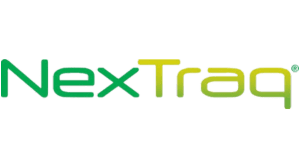![]()
How Much Does GPS Fleet Tracking Software Cost in 2025? (Updated June 19, 2025)
Fees for GPS fleet track software range from $35/month per vehicle for basic systems to advanced systems laden with features for $63/month or more. Compare costs from suppliers in your area:
In the current busy business world, handling a fleet well is important for success. GPS fleet tracking software has emerged as a powerful tool, enabling businesses to monitor vehicle locations, improve operational efficiency, and enhance driver safety.
This guide explains what GPS fleet tracking software is and its key features, and how it works. It discusses the numerous benefits it offers, such as reducing fuel costs and boosting customer satisfaction. The costs associated with implementing this technology and the factors that influence pricing are also covered.
Whether you are considering investing in GPS tracking If you want to learn more about what it can do, this complete guide gives you all the details you need.
What Is GPS Fleet Tracking Software?
GPS Fleet Tracking Software is a helpful tool that improves fleet management by using GPS technology, tracking devices, and telematics. This software allows you to view vehicle locations immediately, offering important information on the efficiency of your operations and assisting businesses of any size in making informed decisions.
By using tracking devices in your fleet, you can better plan routes, watch driver behavior, and meet industry standards and benchmarks. As GPS fleet tracking approaches 2025, these systems are becoming more sophisticated, providing helpful tools for data analysis and reporting to improve fleet performance. If interested, you might explore our insights on how to find affordable fleet tracking solutions to complement these advanced systems.
What Are the Features of GPS Fleet Tracking Software and Software Providers?
GPS fleet tracking software includes important features that improve how it works and how users interact with it. These features include an easy-to-use interface for smooth browsing, a mobile app for access while traveling, and advanced tools to analyze data and track performance numbers. The software sends alerts and notifications, important for checking driver actions and keeping the fleet safe. Think about how these features can make your fleet work better and increase your return on investment.
A well-designed user interface makes complicated information easy to understand, helping fleet managers quickly see useful information.
The mobile app allows users to monitor their fleet remotely, enabling fast decision-making.
Data analytics tools go beyond basic functions by offering detailed analysis of route efficiency, fuel use, and vehicle upkeep needs.
When alerts for unusual driver behavior or potential mechanical issues are integrated into the system, they serve as critical tools for mitigating risks and enhancing safety.
These parts work together to build a complete system that helps develop better plans and results for managing vehicle fleets.
How Does GPS Fleet Tracking Software Work with Integration Capabilities?
GPS fleet tracking software operates by utilizing GPS technology and telematics to provide real-time vehicle monitoring. The system collects data from tracking devices installed in the vehicles, transmitting information such as location, speed, and driver behavior back to a centralized platform for analysis. This data can then be used to make routes better, comply with regulations, and increase fleet efficiency.
As technology advances, keeping data privacy in mind becomes essential for maintaining customer trust and satisfaction.
The software also includes many telematics features that let fleet managers see important details about fuel use, vehicle maintenance schedules, and driver performance. For those exploring solutions, discovering the best real-time GPS tracking devices can enhance the effectiveness of fleet management systems.
Each vehicle is equipped with sensors that gather performance metrics, which are then relayed through cellular or satellite networks. Data is examined with detailed formulas to create helpful information, assisting in making better decisions.
Following data security practices like encryption and strict access controls is important for meeting the necessary regulations. By following these rules, important information stays protected and trust is built between service providers and their clients, which is very important with today’s technology.
What Are the Benefits of Using GPS Fleet Tracking Software for Asset Management?
Using GPS fleet tracking software offers many advantages that can greatly improve how your fleet performs and operates. By using live data, you can make routes more efficient, cut down on maintenance costs, and keep a close watch on vehicles, which positively affects your profits.
These systems also come with strong security features that safeguard your assets and information, ensuring compliance tracking. Better driver habits contribute to fleet safety and make sure customers are happy with timely deliveries and reliable services. For those looking to understand the cost implications, our comparison of Rhino Fleet Tracking vs. US Fleet Tracking highlights the practical features and benefits that different options offer.
![]()
1. Improves Fleet Efficiency and Productivity
One of the primary benefits of GPS fleet tracking software is its ability to improve fleet efficiency and productivity through intelligent route optimization. By analyzing historical data and key performance indicators, you can identify the most efficient paths for your vehicles, reducing travel time and fuel consumption. This reduces expenses and improves the productivity of your fleet, enabling more deliveries and services within a set period.
For example, a delivery company using GPS fleet tracking software cut its average delivery time by 20% after improving route planning. By examining data patterns, the company identified peak traffic hours and adjusted its routes accordingly.
Businesses can use this data to track how drivers behave, which aids in teaching them to drive in a way that saves fuel. A logistics company noticed a big decrease in fuel expenses, turning their early spending on technology into large yearly savings.
By improving routes and using data analysis, businesses can greatly increase their ability to work effectively.
SHOW ME GPS SOFTWARE PRICING2. Reduces Fuel Costs
Reducing fuel costs is a significant advantage offered by GPS fleet tracking software, primarily achieved through effective driver behavior monitoring and geofencing. By analyzing driving patterns, such as excessive idling or speeding, you can provide targeted training to drivers, promoting more fuel-efficient practices. Implementing geofencing can alert you when vehicles leave designated areas, helping to prevent unauthorized use and excessive fuel consumption.
Besides these strategies, the software can track vehicle routes live, allowing for changes that avoid traffic jams and improve fuel use.
For instance, delivery vehicles can receive immediate updates on the fastest routes, mitigating delays and unnecessary fuel expenditure during transit.
Incorporating maintenance alerts based on vehicle performance can prevent inefficiencies caused by poor mechanical conditions, which often lead to increased fuel consumption.
Including these features helps businesses lower fuel expenses and run more smoothly, resulting in great savings over time.
3. Enhances Driver Safety
Improving driver safety is an important advantage of using GPS fleet tracking software, which provides detailed vehicle monitoring and live tracking. By receiving alerts and notifications about unsafe driving behaviors, you can take proactive measures to correct these issues before they lead to accidents. Compliance with safety regulations can be closely monitored, ensuring that your fleet adheres to industry standards and best practices.
This software provides fleet managers with helpful details on driving behaviors, such as speeding, hard braking, and rapid acceleration.
These features enable users to identify risky behaviors quickly and implement training or corrective actions. Real-time tracking lets fleet operators verify that drivers stick to assigned routes, helping avoid dangers and lower the risk of mistakes.
By creating reports on safety measures, organizations can continuously update their policies, improve driver skills, and establish a strong safety culture in their operations.
This method keeps drivers safe and makes the fleet work better.
4. Increases Customer Satisfaction with Business Intelligence
GPS fleet tracking software helps improve customer satisfaction by allowing timely deliveries and improving service agreements. With real-time tracking capabilities, both you and your customers can monitor the location of deliveries, ensuring transparency and reliability. This increases trust and improves how your business runs, helping you reliably meet service expectations.
The ability to provide estimated arrival times allows customers to plan better, reducing wait times and frustration.
When delays happen, the tracking system can help share information quickly, reducing complaints and encouraging teamwork.
Data from GPS tracking helps improve route planning and resource management, leading to lower costs.
All these factors culminate in a more responsive and customer-centric service, reinforcing loyalty and potentially attracting new clients who prioritize reliability in service delivery.
How Much Does GPS Fleet Tracking Software Cost in Terms of Total Cost of Ownership?
The cost of GPS fleet tracking software can differ greatly based on pricing plans, subscription fees, and total ownership costs, including upfront costs and long-term investment.
When evaluating software options, think about the purchase price, setup time, installation expenses, and potential long-term service agreements.
Thinking about these factors can help you choose the right option for managing your fleet, considering fleet safety and environmental impact.
Fleet Tracking Cost Study 2025: Analyzing Market Trends
For a detailed overview of current pricing, see our study on how much GPS fleet tracking software costs in 2025.
![]()
Featured GPS Tracking Solutions
The Fleet Tracking Cost Analysis 2025 examines the financial aspects of fleet management, focusing on software subscription costs, GPS tracking, and the potential for cost reductions. This analysis is important for companies looking to improve their fleet operations and control costs.
Fleet Management Costs give information on the different software subscriptions and tracking options offered to fleet operators. Basic Fleet Software subscriptions are priced at $14, catering to small businesses or those with limited fleet management needs. For those needing stronger features, Mid-Range Software is available at $35. This tier often includes advanced tracking and analytics capabilities that can contribute to improved operational decisions. Companies managing heavy-duty vehicles might opt for the Premium Software, costing $499. This top choice usually provides all the necessary tools for handling the challenges of running large and unique vehicle groups.
Cost Reduction Potential highlights significant savings opportunities with fleet management software. Businesses can achieve 13% savings on fuel expenses primary by better route planning and safer driving habits. Additionally, a 20% reduction in maintenance costs is feasible, as predictive analytics and regular vehicle health monitoring can prevent costly repairs and downtime.
The role of Influencer Usage and Optimization in fleet management is notable. 54% of fleets use nano and micro-influencers to promote efficiency and innovation. These influencers, often industry experts or tech enthusiasts, can help spread best practices and innovative solutions. Using these strategies can lead to a 35% improvement in operational efficiency, highlighting the value of adopting modern management techniques and tools.
The Fleet Tracking Cost Analysis 2025 emphasizes the need to select the right fleet management software and points out possible savings in running expenses. By using technology, GPS systems, and advice from influencers, businesses can make their fleet operations more efficient and cost-effective.
1. Subscription-based Pricing Models
Subscription-based pricing is a popular model for GPS fleet tracking software, where businesses pay recurring costs for access to the software and its features. This model often provides payment plans that can change according to the size of your fleet and your requirements, making it suitable for many organizations. When you work with trustworthy software companies, they will keep your software updated and help you with any issues.
It’s essential to consider both the benefits and drawbacks of this pricing structure and payment plans.
On the one hand, the predictable monthly expenses allow for more manageable budgeting, as companies can forecast their software expenses more effectively over time. This stability can aid in long-term planning, especially for fleets looking to expand.
On the other hand, the ongoing costs associated with subscriptions might accumulate over years, leading some businesses to question the value compared to a one-time purchase.
Leaders must carefully evaluate these factors to decide what will work best for their organization, considering both current and upcoming financial effects and cost-benefit analysis.
2. Per-vehicle Pricing and Cost per Vehicle
Per-vehicle pricing is another common approach to GPS fleet tracking software costs, where businesses are charged based on the number of vehicles in their fleet. This model lets you expand easily, because you only pay for the amount you use. It’s a great choice for expanding fleets. As your fleet size increases, it’s essential to consider how additional features and functionalities may affect overall costs.
For small to medium-sized businesses, this pricing structure can lead to significant cost savings and ROI, enabling them to allocate resources more effectively.
When companies opt for a per-vehicle model, they can monitor costs closely, ensuring they pay only for services needed for current operations.
As they add more vehicles to their fleets, they need to be mindful of rising expenses and maintenance expenses. Businesses need to consider the cost of each vehicle and how extra features will affect the total expense. This helps them balance usefulness and cost while managing their fleet operations.
3. Customized Pricing
Custom pricing plans for GPS fleet tracking software are designed for businesses with specific needs, offering a solution that fits those needs. This approach allows for flexibility in contract terms and feature sets, ensuring that you invest only in what is necessary for your fleet management objectives. Engaging in a thorough software evaluation can help you identify the best customized pricing model for your organization.
By looking at the different parts of pricing, like how often you check, how many vehicles you have, and extra options such as maintenance alerts or checking driver actions, businesses can work out deals that fit their work needs.
It’s important to look at what different companies offer, consider user reviews, and request demos or trial periods. This helps to see if a platform matches your specific needs and value propositions.
Knowing how choosing a solution that meets specific requirements can lead to big savings and improved results over time.
What Factors Affect the Cost of GPS Fleet Tracking Software and Fleet Utilization?
Various elements can change the price of GPS fleet tracking software, impacting your costs and financial planning.
These factors may include the number of vehicles in your fleet, the specific features you need, software updates, and the level of customer support from providers. Additionally, understanding how much GPS fleet tracking software may cost in 2025 can provide valuable context when making budgetary decisions.
Other considerations, like integration with other systems and the ability to customize features, may also impact pricing and software costs.
![]()
1. Number of Vehicles and Market Demand
The number of vehicles in your fleet is a key factor affecting the cost of GPS fleet tracking software, as most pricing models scale based on vehicle count. A larger fleet size often results in different pricing strategies, which can include volume discounts or tiered pricing structures. It’s essential to evaluate how your fleet size aligns with your chosen software vendor’s pricing model to avoid unexpected costs.
Often, companies give special discounts or deals for bigger fleets, helping businesses manage their expenses well.
Companies should also consider whether the software includes unlimited features or if there are additional fees for certain functionalities as the fleet grows. Knowing the long-term commitments in contracts helps avoid unexpected issues, allowing the fleet manager to make informed choices that fit operational needs and tracking accuracy.
Each vendor might have different ways of setting prices, so you should look at them closely to find the best choice for the fleet size now and later.
2. Features and Functionality
The features and functionality of GPS fleet tracking software significantly impact its cost, as advanced capabilities, such as automation tools and tracking alerts, often come with higher price tags. When looking at different software choices, it’s important to compare features to make sure you get good value for your money. Knowing which features are important for your fleet can prevent wasting money on extra functions you don’t need.
Various software solutions may offer a range of features such as:
- real-time tracking
- route optimization
- reporting capabilities
- driver behavior analytics
The complexity and expense of these features can differ, so it’s important to determine which ones fit the particular needs of your fleet operation and digital transition. By comparing various options, businesses can make informed decisions that suit their budget and improve how they operate.
Choosing the right combination of features can lead to long-term cost savings and improved management of fleet resources.
3. Integration with Other Systems and Software Functionalities
Connecting GPS fleet tracking software with other systems can improve how operations run, but it might also lead to higher expenses, especially if more connections need extra development or licensing costs. It’s important to evaluate how potential software can work with what you already use. Knowing the full cost, including setup costs, helps you choose wisely.
Linking fleet tracking with tools such as routing software, maintenance management, and reporting systems allows information to move instantly, leading to faster decisions and better service.
If the chosen GPS solution isn’t compatible with legacy systems or requires significant upgrades to facilitate this integration, organizations could face unexpected expenses that erode potential savings and affect fleet safety.
Therefore, an analysis of how the new technology will mesh with existing infrastructure is essential, as it can significantly impact both short-term costs and long-term operational effectiveness, considering implementation timeline and software licensing.
4. Customer Support and Training
The cost of GPS fleet tracking software can be affected by the customer support and user training provided, as detailed support services are usually part of more expensive plans. Investing in user training can lead to improved software utilization and better outcomes for your fleet management operations. When evaluating software options, consider the value-added services provided by vendors, as they can significantly influence your decision.
Good customer support is essential for helping users use the software smoothly and solve any problems they encounter.
When users feel supported, their confidence in utilizing the software increases, which can lead to more effective management of fleet resources.
Training sessions help users learn features and functions better, promote methods that make work more efficient, and include GPS tracking and fleet tracking systems.
A helpful support team can quickly solve problems using live GPS, cutting down on delays and keeping your fleet operating smoothly with online tracking and mobile access.
Though the starting expenses may appear greater, the benefits over time, such as excellent support and training, can lead to a good return on investment (ROI) and make the most of technology improvements.
SHOW ME GPS SOFTWARE PRICING


